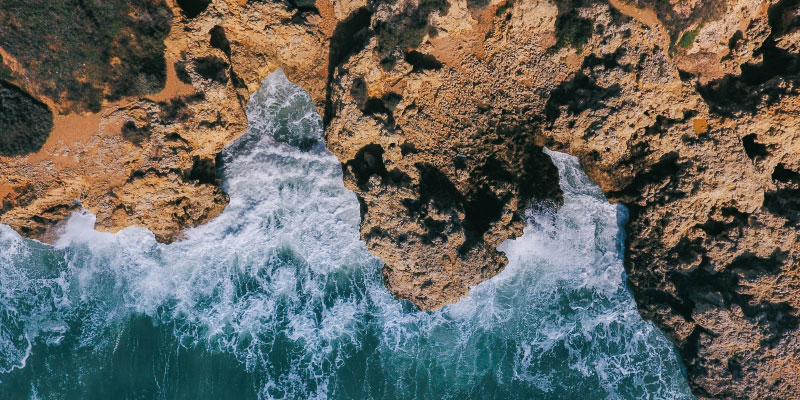Challenges in GWI: Saline Intrusion
Challenges
in GWI: Saline Intrusion
In this blog
I want to focus on one of the most challenging areas of management for groundwater
irrigation; coastal aquifer resource management. As we have previously discussed,
groundwater is an incredibly important development resource in Africa, but this
development has to be sustainable.
In coastal
East Africa, specifically coastal areas of Kenya, Tanzania and Comoros, there
is a heavy reliance on large aquifers. An aquifer is a large underground layer
of water-bearing permeable rock, unconsolidated materials or rock fractures
from which groundwater can be extracted.
The resource is theoretically infinite, however we
will go on to discuss the fact that the availability of this resource is
determined by societal factors, as well as by physical and environmental factors (Comte
et al, 2016). The latter of which dictating the ultimate renewability of
the resource.
As
previously discussed, aquifers hold the potential to provide a reliable and long-term
solution to agricultural irrigation. Aquifers provide natural water purification,
meaning that crops can be grown from the water pumped straight out of the
ground. Aquifers also provide flood management as when it rains heavily, the
porous rock absorbs water. Due to unprecedented demographic growth in East
Africa in the past few decades, water demand has increased. This has caused a
number of the coastal aquifers to become stressed. The demographic usage pressure
alongside environmental change minimising rainfall events has led to saline
intrusion (Oiro,
2019).
Saline or
saltwater intrusion is the movement of saltwater into freshwater aquifers. Saline
intrusion occurs when coastal aquifers are overused, and the negative pressure
difference draws in coastal water (Alfarrah, 2018). This process contaminates the water in the aquifer.
Analysis
of long-term records shows that unsustainable groundwater abstraction is the
main driver of aquifer and borehole salinization. Whilst saline intrusion can
occur naturally in some areas, the process is dramatically enhanced where there
are failures of governance.
Arguably
the greatest problem with overusing aquifers is that the saline intrusion
contaminates the water, leading to many long-term knock-on effects. Saline intrusion
obviously means that the water is no longer drinkable and has to be filtered
straight from the pump. However, groundwater is rarely filtered for irrigation
and long-term use of saline water to irrigate crops has led to soil quality
deterioration (Comte
et al, 2016). When soil is irrigated with saline water, natural ions and minerals
are lost, and the effective fertility of the soil is dramatically reduced (.
The effect of this is long-term damage to agricultural land.
A strategic aquifer in the coastal region of Kenya has been surveyed and mapped for
a number of decades. Analysis of data has found that the saltwater front has risen
by 80 m and “advanced toward the well-field by up to 2 km” in the last 30 years
(Oiro,
2019). Significant new hydrological insight is needed in order to
substantially cut down on saline intrusion.
With
results confirming the levels of saline intrusion put alongside the critical need
to take advantage of groundwater for irrigation and overall development,
sustainable hydrological practises and governance are required. Groundwater in East
Africa lacks monitoring infrastructure and the recent urban and agricultural success
from utilising groundwater has meant that people are reluctant to change their
ways. Sustainable practices don’t have to just be limiting the use of the
resource, they can also include reliance on alternative methods of groundwater
extraction such as traditional shallow wells (Fluence,
2017). However, encouraging the re-implementation of large numbers of
shallow wells is a governance issue in itself.
I hope
this blog has provided sufficient explanation into one of the greatest problems
with groundwater irrigation in coastal regions, as well as provided insight
into the complex governance that defines almost every non-physical issue.

Hello Henry! I think your post is quite salient due to the many narratives of how groundwater is a solution for irrigation. Sometimes the potential hazards of poor management of this resource is overlooked and seen as a panacea.
ReplyDeleteThanks for your comment, I am really trying to capture multiple narratives of all the topics in my blog so i'm glad you enjoyed it!
DeleteI like how you introduce aquifers to ensure people from all backgrounds understand the topic. One you explain aquifers, it is easier for readers to grasp the topic of saline intrusion.
ReplyDeleteThank you for your comment, I really appreciate the time you took to read the blog!
DeleteI like how you explain everything in a very understandable manner. I recently came across an article by Karlberg et al, 2007 on the usage of saline water for irrigation. I think you might be interested in looking at the more positive side to using saline water.
ReplyDeleteI'll be sure to look it up. Thank you for the recommendation!
DeleteReally interesting blog, I think this is an often overlooked aspect of groundwater irrigation but is crucial when considering the long-term viability and sustainability of large-scale groundwater use in sub-Saharan Africa.
ReplyDeletei completely agree, it is also a really interesting issue because it ties physical and societal factors together.
Delete